Friendship Quilt 2
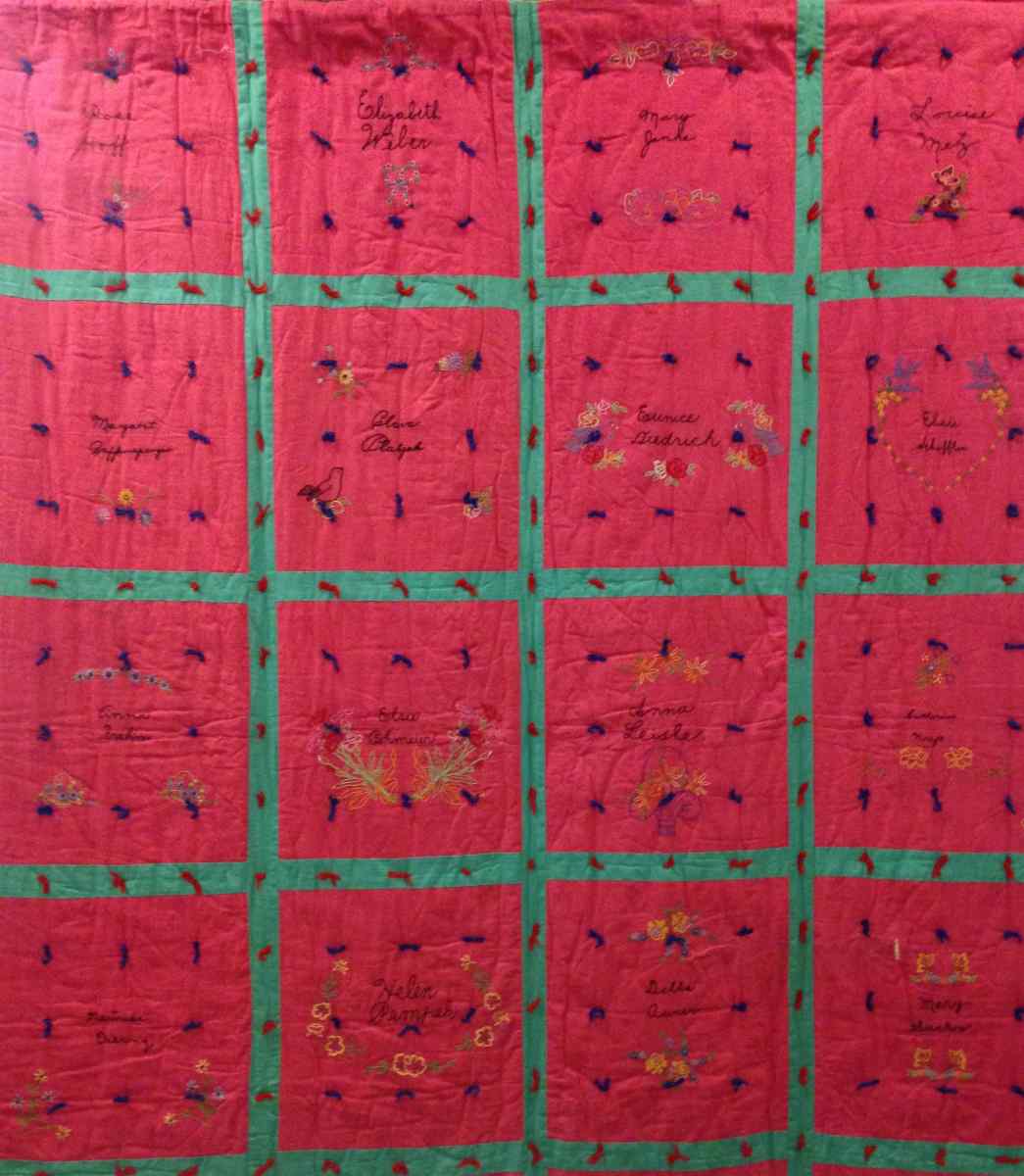
Anna Leisle's Friendship Quilt - 1945
Born in 1875 in Iowa, Anna (Offer) Leisle lived most of her long life in the Town of Bern in western Marathon County. It was there that she and her husband, Charles, raised their sons Edwin, Daniel, and Elmer, and a daughter, Irma. Another son, Philip, died in infancy.
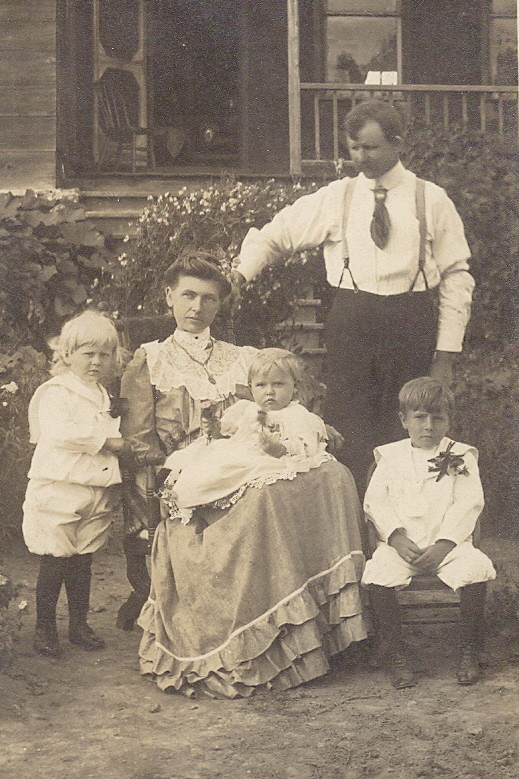
As a housewife and mother living in rural Marathon County, Anna likely had limited time and opportunity for social activities. This changed in 1938 when she became a founding member of the newly formed Van Buren Homemakers Club. These clubs served as both educational and social activities for rural women with group members taking turns hosting monthly meetings.
It was common for Homemaker Clubs to create “friendship quilts” for each member. In 1945, individual squares created by 12 members were given to Anna, who assembled and kept this “friendship quilt”. After Anna’s death in 1964 the quilt passed to her daughter, Irma Schneveis.
After Irma’s death in 2002 the quilt was returned to the Van Buren Homemakers Club, who donated it to the Marathon County Historical Society.
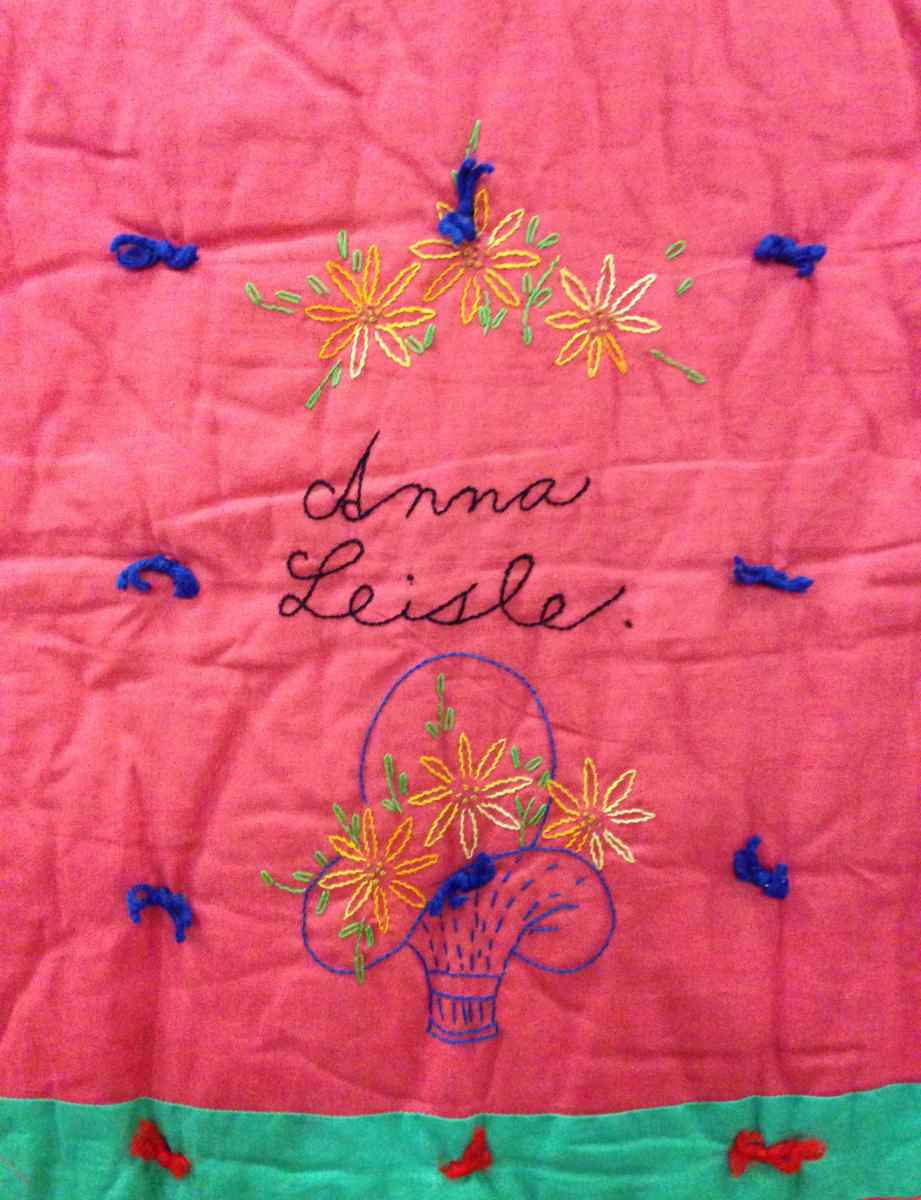
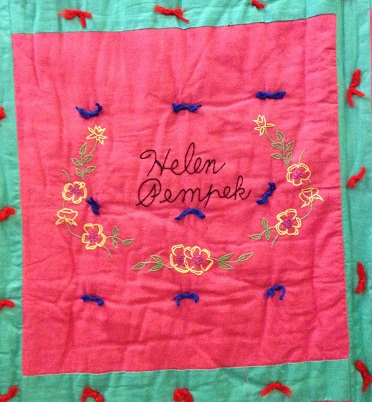
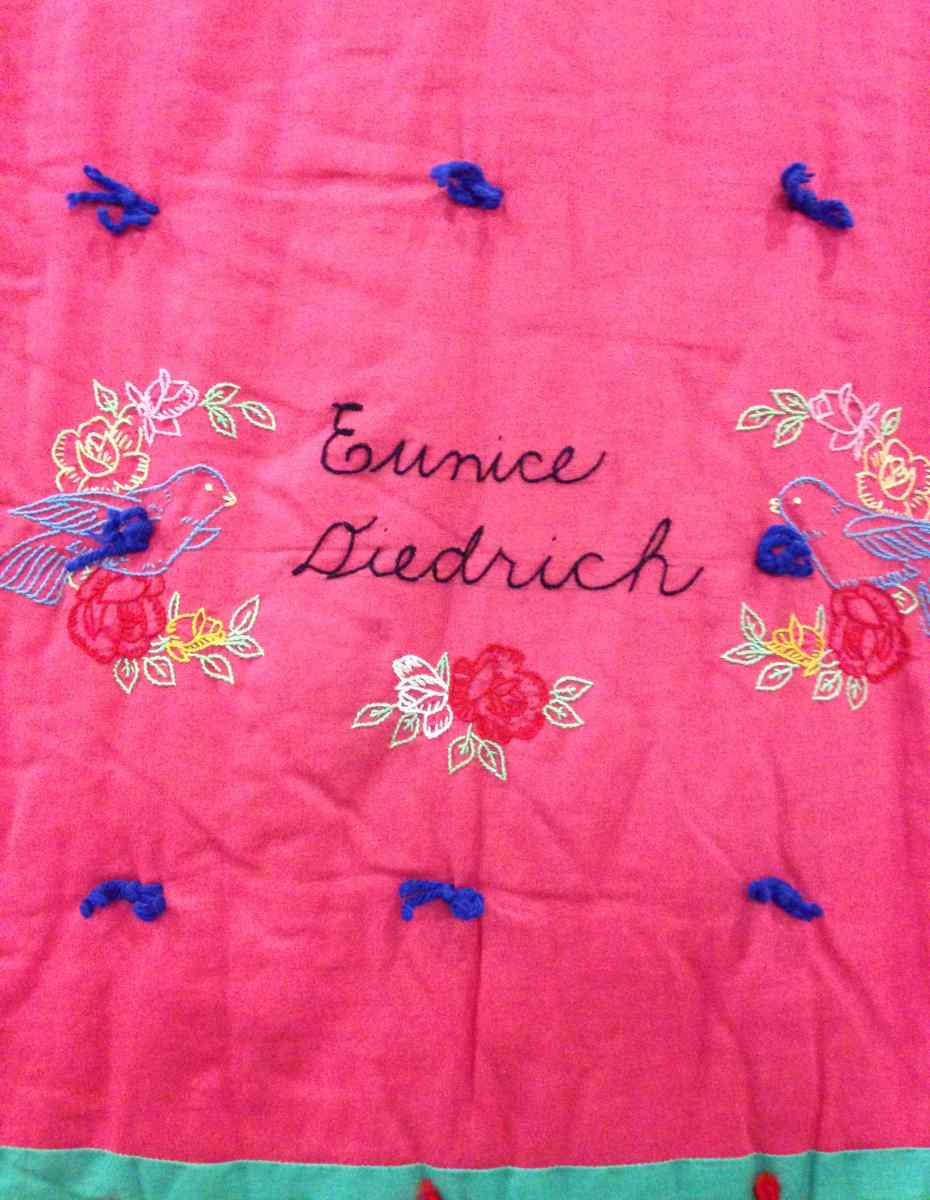
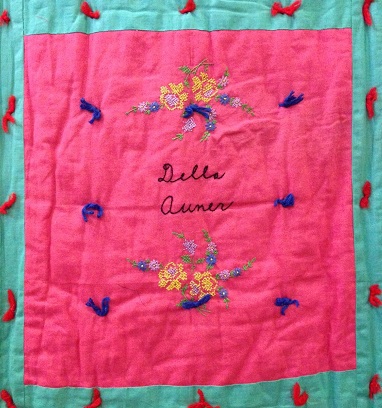
The Quilt
In 1945, the members of the Van Buren Homemakers Club in the Town of Bern made blocks for friendship quilts. They used a rich “bubblegum” (rose pink) fabric and each woman embroidered a floral designs and her name on a block. Anna Leisle, whose signature is in the right center of the quilt over an embroidered basket, owned this quilt.
Some women did cross-stitch embroidery in their squares, others chose to use an outline stitch and French knots. Patterns for embroidered floral designs, birds and other motifs were readily available through women’s magazines at the time.
A deep mint green sashing was used between the pink blocks. Both colors were popular in the 1930s and 40s. The batting is wool. The backing is a polished cotton floral print of pink and cream roses on a mint green background, which coordinates with the colors in the blocks. Navy blue and red yarn ties hold the layers together. There is no binding – the quilt has a knife-edge finish.
Van Buren Homemakers Club
The Van Buren Homemakers Club was organized February 23, 1938, at the home of Mrs. Emil Suckow in the Town of Bern. Their name, Van Buren, was chosen because they were located in the Van Buren school district. The club met every third Thursday afternoon at the house of a member.
Several club “leaders” went to district meetings that included lessons on a variety of topics, which they then presented at monthly club meetings. They shared instructions for hassock making, re-covering furniture, sewing shortcuts, remaking hats, new recipes, and more. Friendship quilts were made and potholders, hankies, and towels were regularly exchanged.
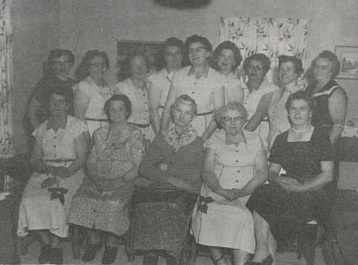
Club members took on many community causes including raising money for school projects, donating to charities, helping neighbors who were sick, and collecting items for families who lost their house to fire.
The club was active until 2003. This quilt was donated to the Marathon County Historical Society by its last president, Rosalie Barkow.
